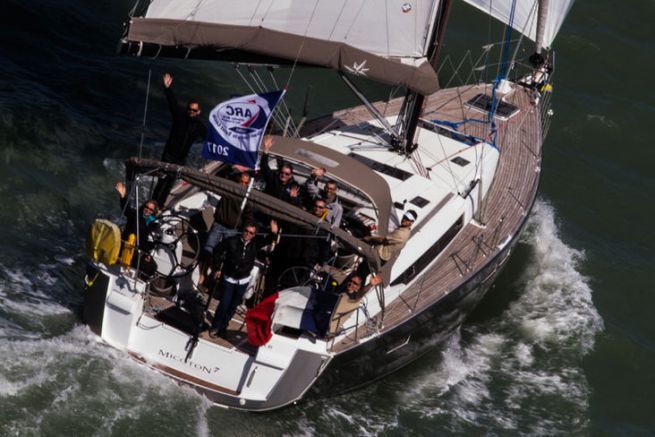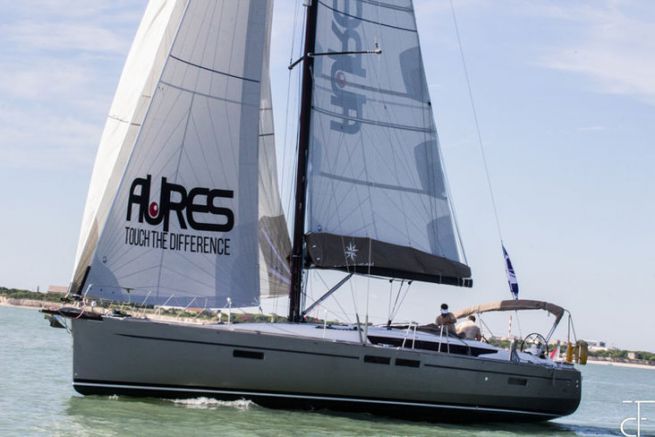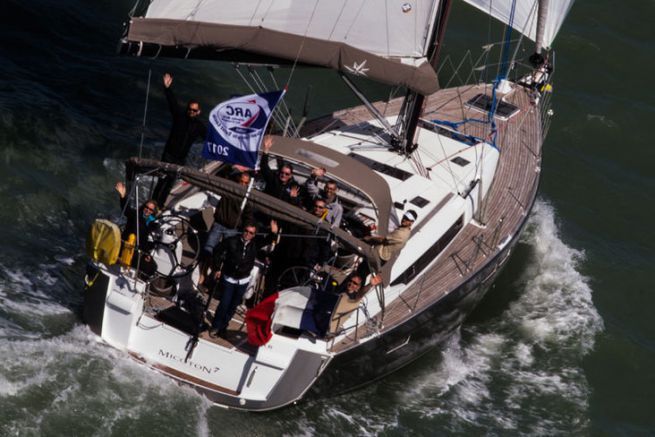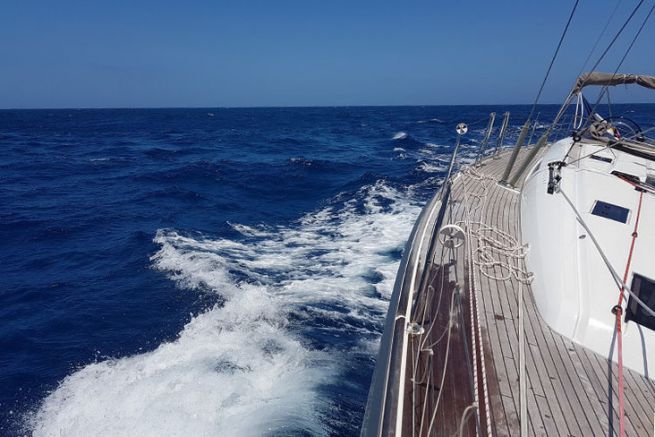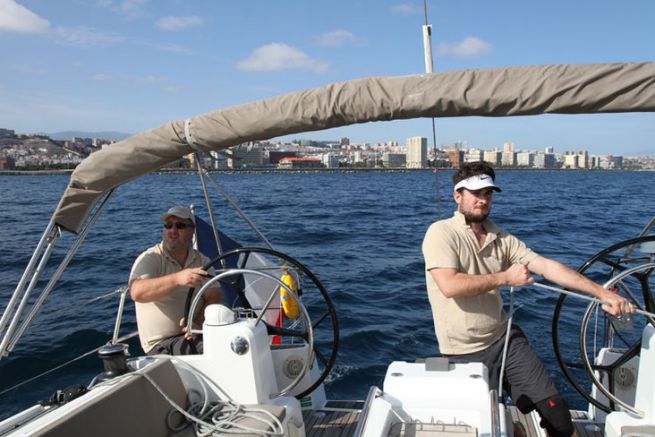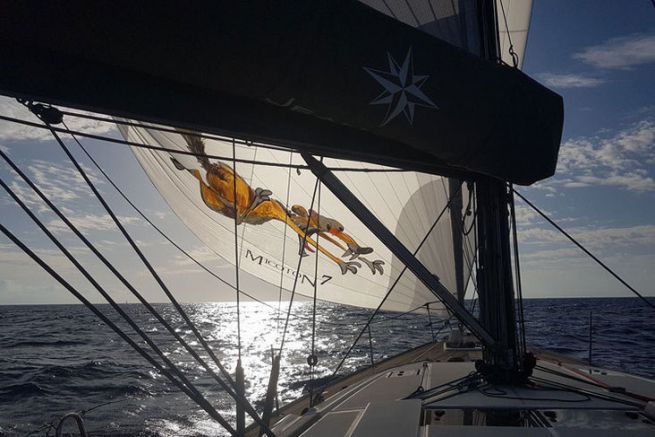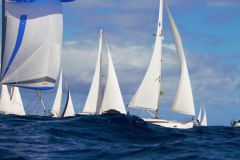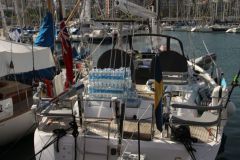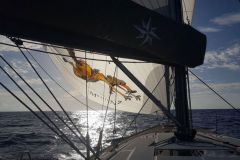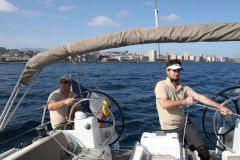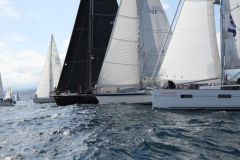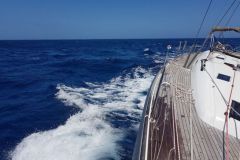How to transform a Sun Odyssey 479 A pure and hard cruising sailboat, in a race-cruise ready to cross the Atlantic in a regatta with a double crew? It is at this yard that the crew of Micoton 7 tackled in preparation for a transat within the framework of the ARC ( see our previous article on this subject ). But the subject is all the more difficult to grasp as the boat has to take on its "cruising" face once it has arrived on the other bank. The aim is to sail on a family cruise in the West Indies this winter. All the modifications must therefore be designed with this in mind.
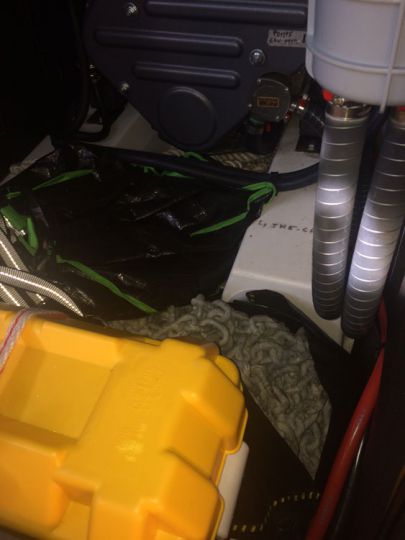
Weight centering
To centre the weights and limit the weight on the bow in particular, the two anchorages on the edge (chain and anchor) are gathered under the engine. Behind the engine battery (the yellow cover), the light anchor and a bag with its chain are protected in the carpet. Further behind, hidden under the engine, is the heavy Spade anchor with its 50 m of chain.
Once the transatlantic race is over, the heavy anchor will find its place at the bow in the anchor locker to take advantage of the West Indian anchorages.
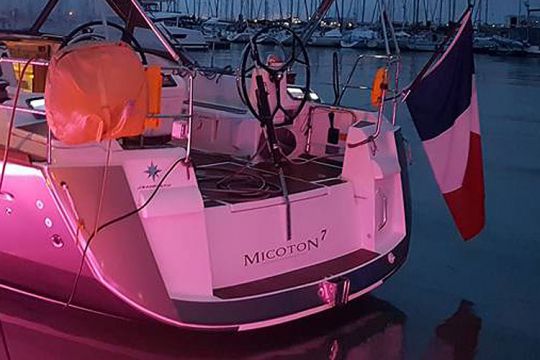
Rear range
It's the only concession to the cruise. Here the race has taken over. On the Sun Odyssey 479, the transom that swivels and turns into a bathing platform at anchor weighs 200 kg alone! In addition, its presence hinders the installation of the hydrogenerator on the transom. Disembarked, this big piece of polyester. It will be back on board when the boat returns to Metropolitan France.
And for the nice anchorages in the tropics, the crew on holiday will have to do without them. Race conditions oblige.
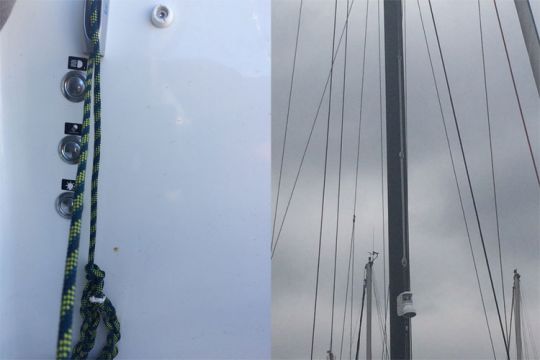
Lighting in the mast
The hours spent steering at night made the skipper think. He therefore decided to install a strip of LED lights on the upper front face of the mast. Controlled from a switch at the helm station (so without having to go to the chart table), it can light the top of his headsail. This is particularly useful when sailing under spinnaker, to monitor a trim. It is also useful for signaling to a boat. By illuminating the top of the sail, a large white halo is created which is very visible from afar (even if it is not in accordance with regulations...)
The engine light and navigation lights can also be controlled from the helm station with 3 switches. It should be noted that the main beam lights (the 3 tricolour lights) can either be controlled from the masthead (a single bulb which consumes less energy) or from the balconies at deck level (regulation lights) using a simple switch at the chart table.
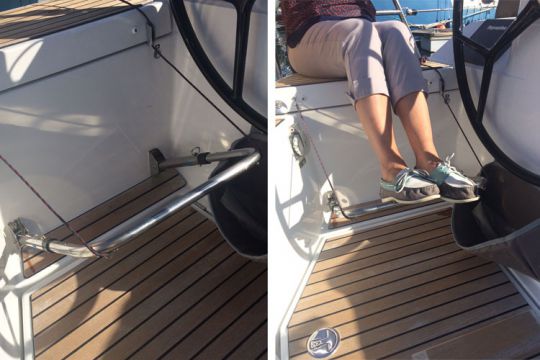
Helmsman's helm position
Even if the autopilot has to steer for long hours, the helm position is still important. The helmsman needs to be properly adjusted without back pain. The Sun Odyssey 479 is equipped with two off-centre steering wheels on each side.
To steer with the seat firmly in place, they simply installed stainless steel foot chocks like those found on the Figaro. Mounted on hinges, they are adjustable in length and inclination with a rope and a blocker. This makes it possible to change the angle of the bust and legs even while sailing without leaving your berth.
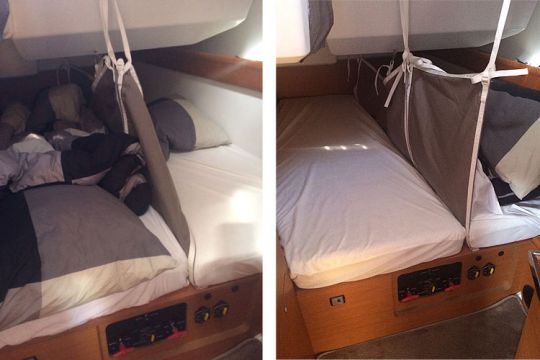
Matting in the cabins
Even if you are on an 11-ton sailboat, the position of the equipment (mainly sails and food) is important. On board Micoton 7, the double berths in the aft cabins have been equipped with anti-roll covers. These are fixed by straps to the ceiling on decks.
During the transat, there will only be 2 on board, which limits the use of the cabins to several people! But when the cruise starts again, the canvas is hidden under the beds and the cabin can be used as a double bed without any problem.
An identical canvas is placed on the saloon bench seat for use as a berth at sea (or even for storing material upwind).
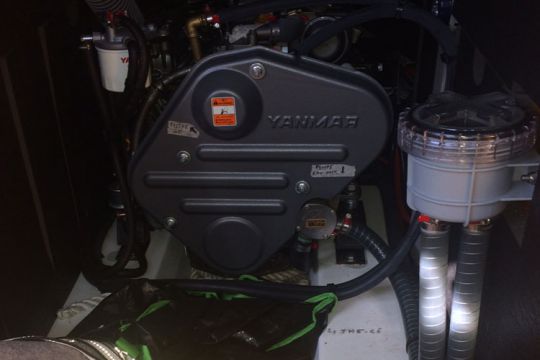
Labelling
All the main engine components are labelled with their names so that you don't have to look for them in the event of a breakdown or excessive fatigue. Reverser with the arrows, all the valves (diesel, inlet, water valve...), electricity... Thus on the front side of the engine, you can see the label indicating the diesel filter and the one pointing to the water pump.
This method comes from the experience of the skipper who knows that reasoning is lessened when you are tired and sleep-deprived. Labels avoid having to think!
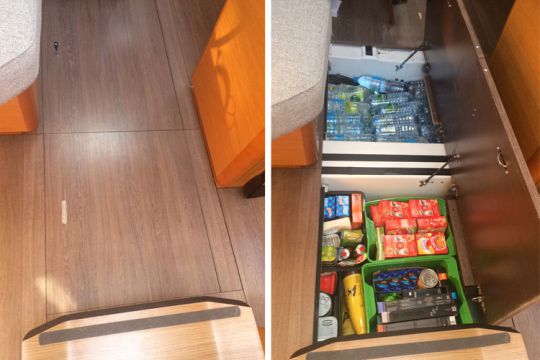
Storage
To make it easy to use the storage units under the saloon floors, they are hinged. This is where the supplies are stored. Apart from the large volume, it is also a good location, as it is low and centred above the keel. Accessibility remains good.
This type of arrangement is as useful in racing to take the food on board for the whole transat as it is for cruising with a larger crew on board.
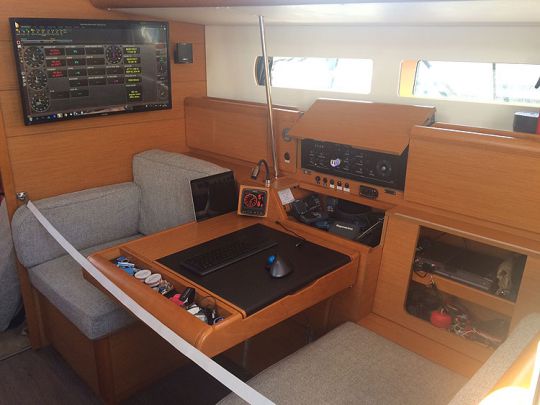
Navigation
Micoton's chart table has been carefully prepared. The onboard computer is a fixed PC (installed in the aft crew) and powered directly by 12 V. It is connected to 2 screens. The biggest one at the bottom, TV style, is used for the counters of the Adrena software during the offshore navigation. The small relay for chart information (no need to see the rocks when you are offshore). In coastal navigation, the reverse is done and the cartography is then displayed in large.
To collect weather information, the boat is equipped with an Iridium Go whose small standard antenna is sufficient to receive messages (no external antenna is needed on a polyester boat).
Note the strap that closes the chart table to keep it in place, which is very useful when on starboard tack.
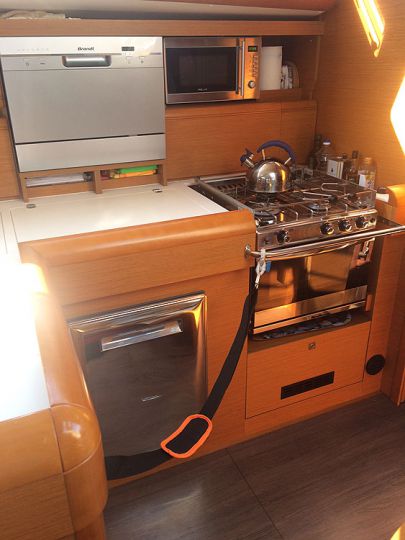
Kitchen
The original kitchen is equipped with a dishwasher and a microwave. Not really racing yacht accessories! However, these appliances will remain on board. Indeed, the dishwasher weighs 5 kg and the microwave 4 kg. Compared to the 11 tons of the boat, this is negligible..
The crew only uses the dishwasher during the holidays. On the deckchair, they live with 2 isothermal bowls (closed by a lid) and 2 spoons, as on ocean racing yachts. Not to save weight, but for ease of use.
As for the microwave, his skipper can no longer part with it: "I'm not too much of a freeze-dried eater and I like to heat up ready-made meals. A few minutes in the microwave and I eat hot. It's great, I can't do without it". On the power supply side, the microwave is 220 volts but it works on a 12/220 V converter. With the Watt and Sea hydrogenerator, the battery charge is always sufficient.
